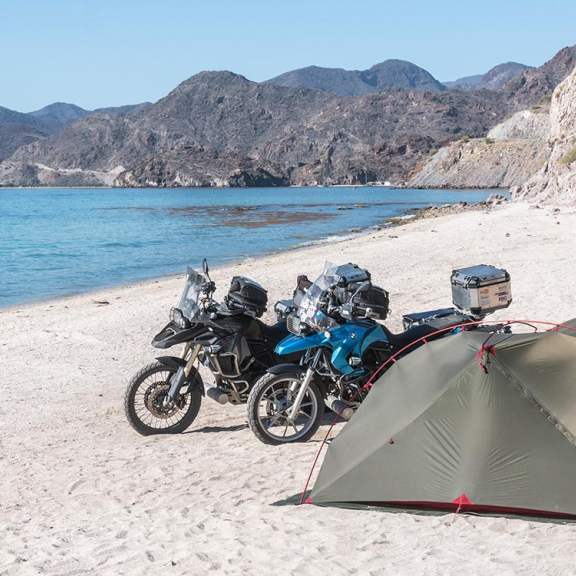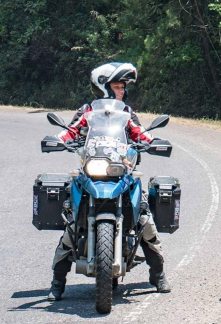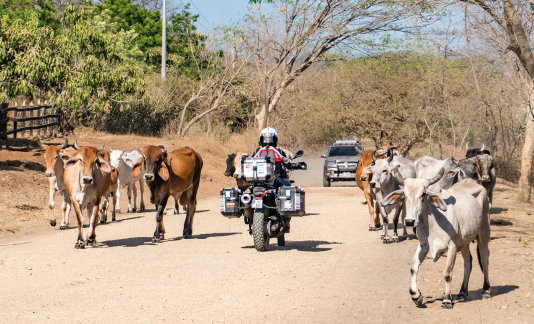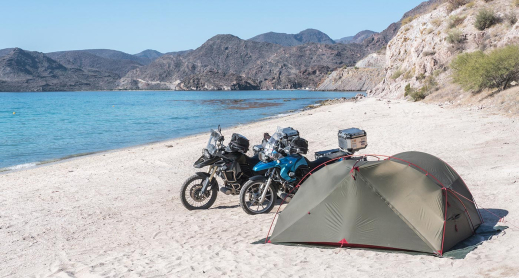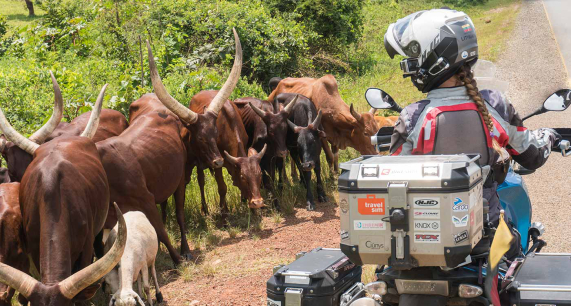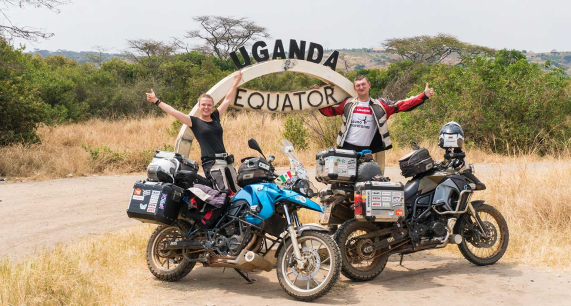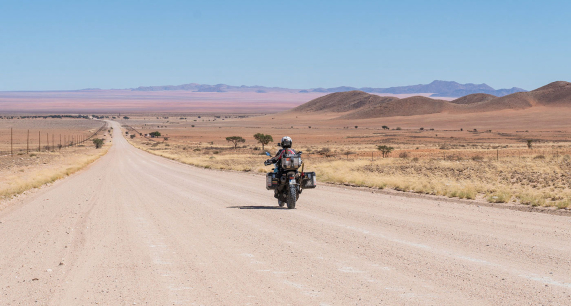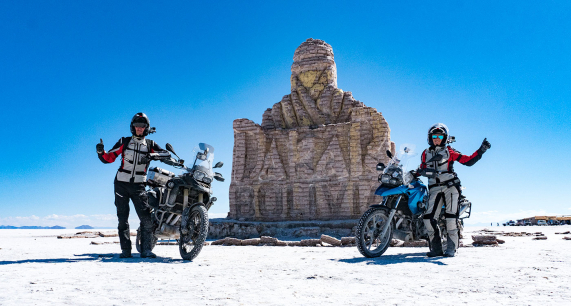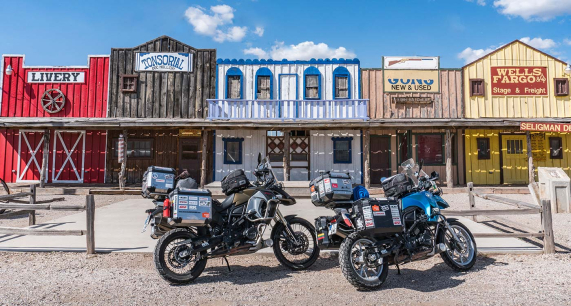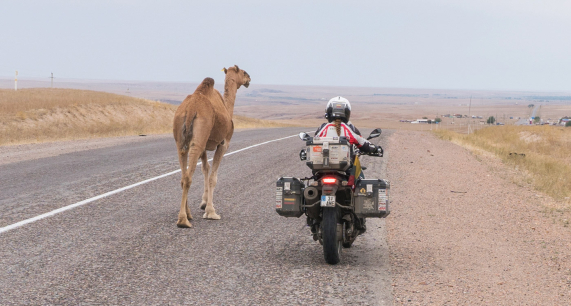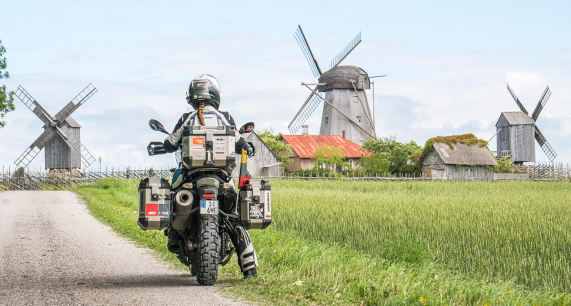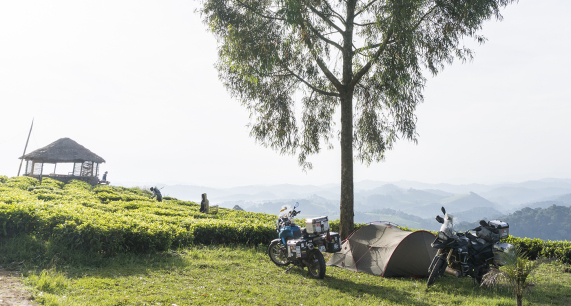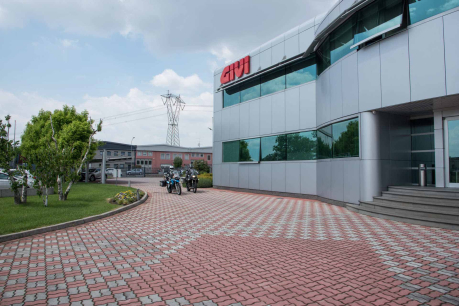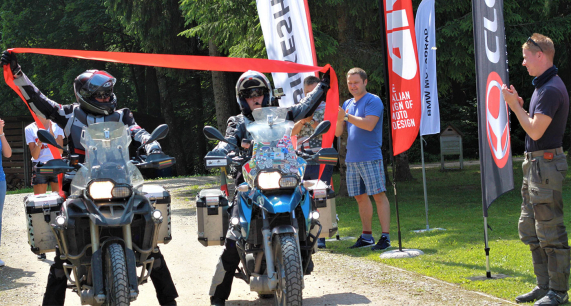Central America
Motorcycle journey in Central America
Our transfer from Colombia to Panama was an extraordinary one. As there are no regular roads between the two countries over the 80 km stretch of dense forests and swamplands, the area is called The Darien Gap. The adventurous way of crossing the border with your motorcycle is doing it on the deck of a yacht or a ship together with your motorcycle. However the regular ship, carrying motorcycles was away somewhere on the coast of Cuba at that time and the smaller yachts would accept motorcycles on board only when going from Panama to Colombia, but not other way around.We have checked the pricy and boring option of transporting the motorcycles in a container-ship or by airplane and decided to take our chances in finding a regular yacht which goes in the direction of Panama and would accept us together with our motorcycles on board. And next thing we know, we found one! A pirate-looking Italian captain agreed to get us all to Panama in three days, so we hired a group of strong men and manually loaded the motorcycles onto the deck of his yacht where another small motorcycle with a sidecar was already loaded to keep company for our BMWs. Little did we know that two days later, due to some beaurocratic obstacles which prevented the yacht from leaving the coast of Cartagena in Colombia, we will have to manually unload our motorcycles back to the shore again…
Luckily, during this process of trying to leave Colombia on a yacht, we hooked up with a group of Chilean and Argentinean travelers who had already booked a container for their two Volkswagen T2 Combi vans. We managed to squeeze all three motorcycles which we unloaded from the yacht into the remaining space of the 40‘ container and decided to join the group in tackling the task of getting the people to the other side too. We spent hours in the bus, bumping down the coast of Colombia, then we switched to the motorboat which was jumping the waves at crazy speed with passengers on-board screaming and holding on for dear life, finally we agreed with Panamanian captain that he will take us the last 300 kilometers on the Caribbean sea to a town called Portobello in Panama on what we thought was a small yacht, but turned out to be a small… boat. At least it had an engine so we didn‘t need to row, but it took us 3 days to finally reach Portobello. We would spend the days on the boat and the nights sleeping on the sand of uninhabited San Blas islands as all our camping gear was packed into the container together with our motorcycles or cars.After taking about two weeks in total to get ourselves and our motorcycles from Colombia to Panama, we spent another two weeks exploring the small countries of Central America: Panama, Costa Rica, Nicaragua, Honduras and Guatemala. Extremely high weather temperatures, dense jungles and frequent border crossings was not exactly what makes us happy when riding motorcycles…
From there, we took the scenic route through the mountains over the spectacular Espinazo del Diablo (road on the mountain ridge, called The Devil‘s Spine) down to the city of Mazatlan, where, just as we arrived, the biggest motorcycling event of Mexico, The Legendary Motorcycle Week 2017, has just ended and so, together with probably a hundred of other bikers we took the ferry to the famous Mexican peninsula Baja California.Baja did feel like a hybrid of Mexico and United States: most people could speak fluent English, there were lots of cars and big RVs (recreational vehicles or simply oversized campervans as we know them in Europe) with US license plates and the shops had large varieties of products from US while at the same time the place still had the vibrant Mexican atmosphere all over it.After spending another week exploring Baja from South to the North, we reached the border of United States of America.
The few pleasant highlights that stayed in our memory from that time was the curvy roads in Costa Rica, a cool ocean breeze on the coast of Nicaragua when we were learning to surf there, spectacular Ruinas de Copan archeological park in Honduras and the impressive preparation for the Easter celebration of Guatemalans in a lovely little town called Antigua. And then we reached the border of Mexico. After all the chaotic, noisy and hot border crossings in Central America, this one was calm and rather orderly. Except it took quite a lot of time due to the long process of handling paperwork and probably a slow customs officer. Then, five minutes after we finally got into the country, we were stopped at the road-block. Mexicans are notorious with those road-blocks and as far as we knew, sometimes things there can get nasty… Luckily these were just farmers, demanding their “taxes” – we had to pay 20 pesos (equivalent of about 1 Euro) per person to be let through. But in spite of this rather small inconvenience which seemed at first much more dangerous than it actually was because of our preconceived fears about Mexico, all the later experiences there were only the pleasant and heartwarming ones. Everywhere we went in Mexico, people we met were exceptionally friendly and as by this time we had acquired enough Spanish language skills to be able to have simple conversations on various topics, every person we got a chance to speak to, soon felt as if he or she was our old friend or a relative.
We took the route to see Tonina ruins soon after we got into the country and to our surprise, after having paid a small fortune to be able to enjoy Peru’s famous Machu Picchu just a couple of months ago, we were let in for free by the guard at the gates! Another pleasant surprise was the possibility to enjoy the mystical atmosphere around the ruins almost all alone, without having to push around with the crowd as in most other touristy places. Another highlights of Mexico was the concrete garden of surrealist sculptures and ponds in the jungle near Xilitla created by the British artist Edward James – “Las Pozas” and the amazing region of Guanajuato with the city itself and the surrounding towns of Dolores Hidalgo and San Miguel de Allende.

